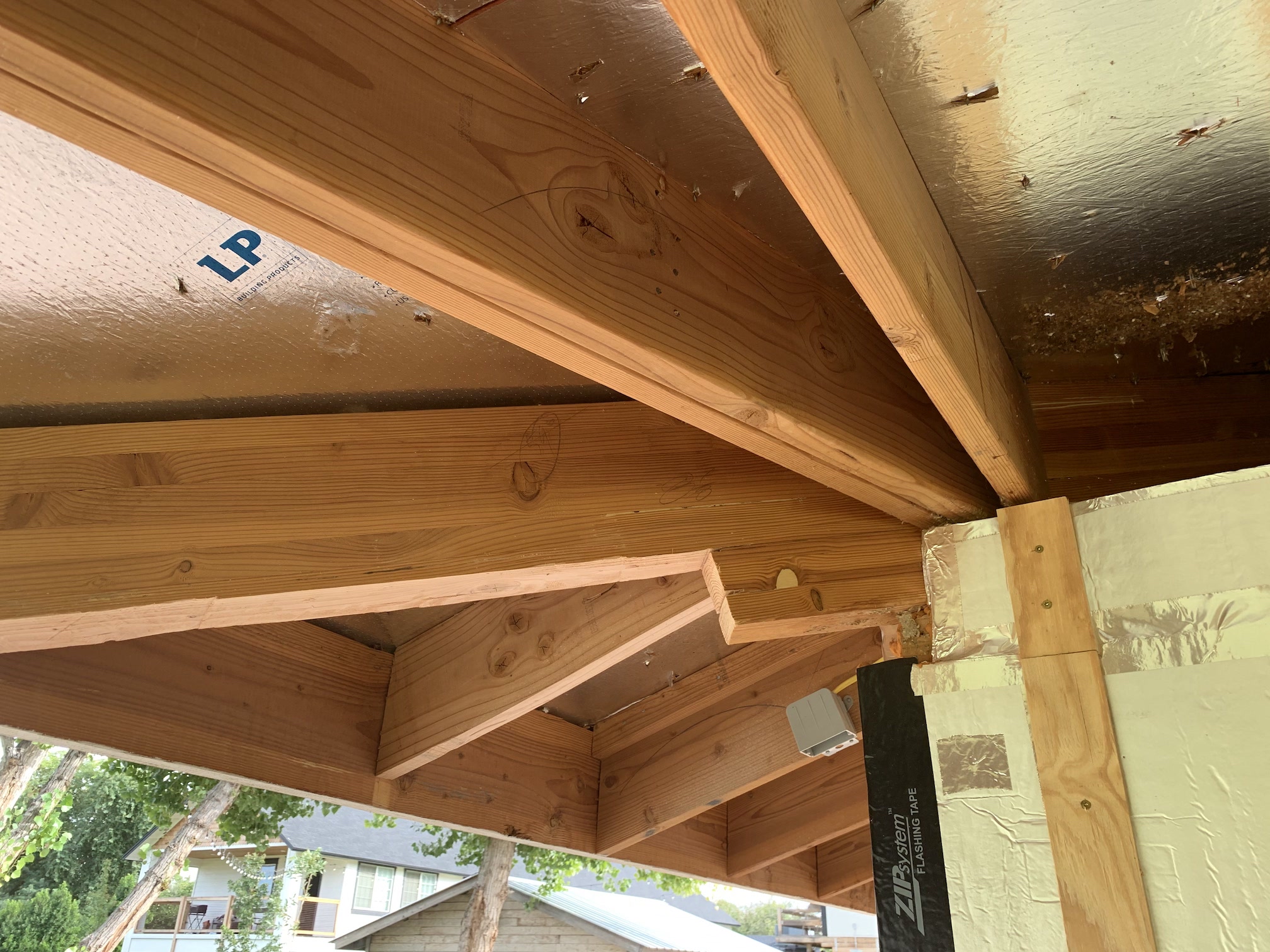How do carpenters and other construction pros efficiently and quickly cut beams, joists, rafter tails, etc when they need to be flush with the members around them (thus restricting use of many power tools).
I have one such rafter tail here:

This is a 3-1/8" thick glulam and I need to rip cut it down to be flush with the joists (rafters?) of the patio ceiling next to it (the 2x10s).
I was able to cut out a chunk already by the time I took the photo using a combination of a circular saw and reciprocating saw. The circular saw was notably restricted both in its length (could only reach maybe 1/3 of the rafter) and its depth (2-1/2" of the necessary 3-1/8"). The reciprocating saw punched through the entire thickness and could go even farther along the length, but it too couldn't go all the way due to the body of the saw conflicting with the flush rafters.
There was a little more room on the back side, but not enough to get either of the two previous saws in use:
This side at least had enough room for me to fit an oscillating tool with a wood blade in there. With that, I could (very slowly) plunge half the thickness into the rafter along the remaining length. After all that, I was able to pound a demolition bar into the artificial crack and rip the rest of the piece down along its grain line.
In the end, then, I was able to rip the rafter tail flush with the patio ceiling members but it took me well over an hour with lots of head scratching and multiple tools. Surely there is a far easier way to do this.
How would you have done this?

